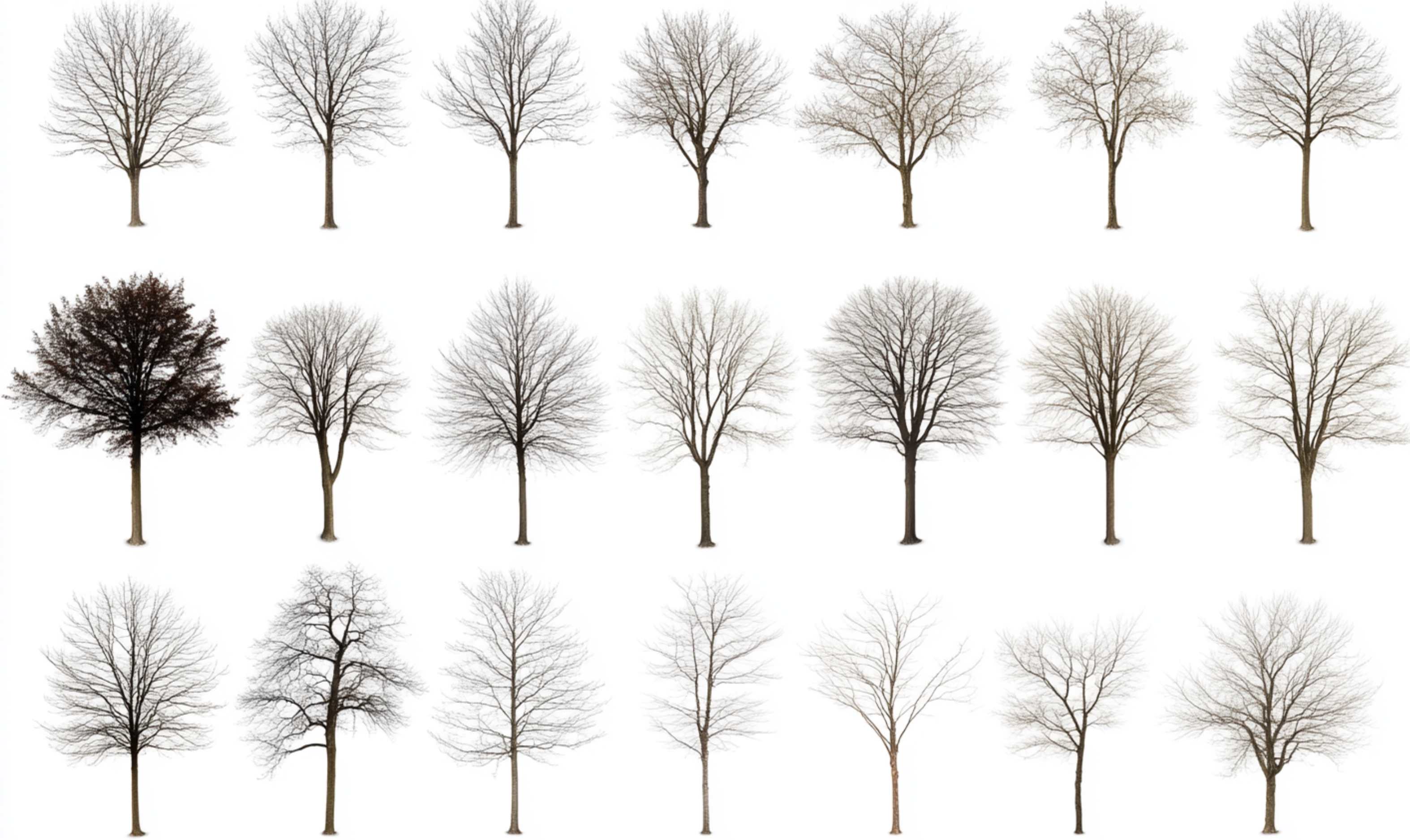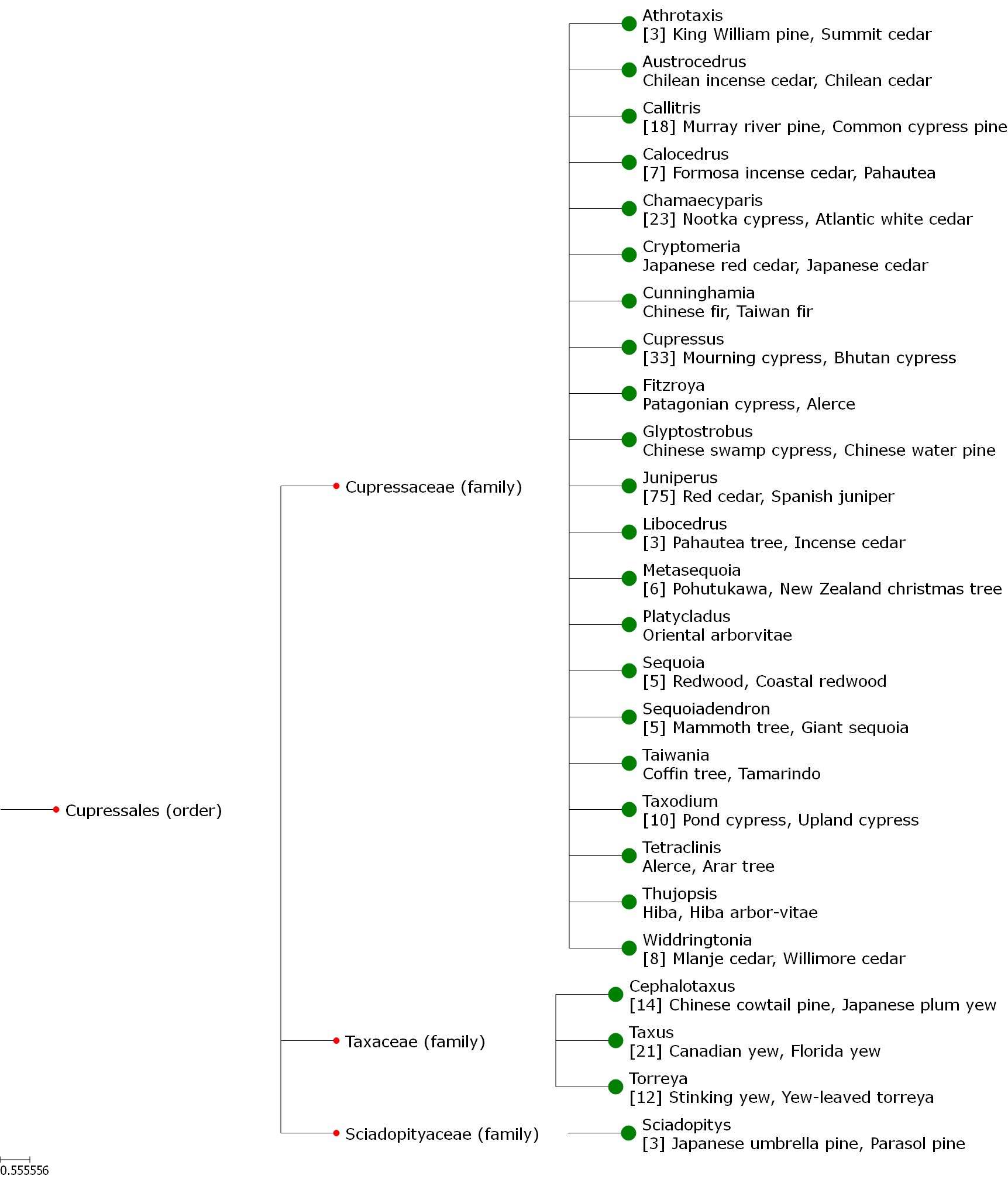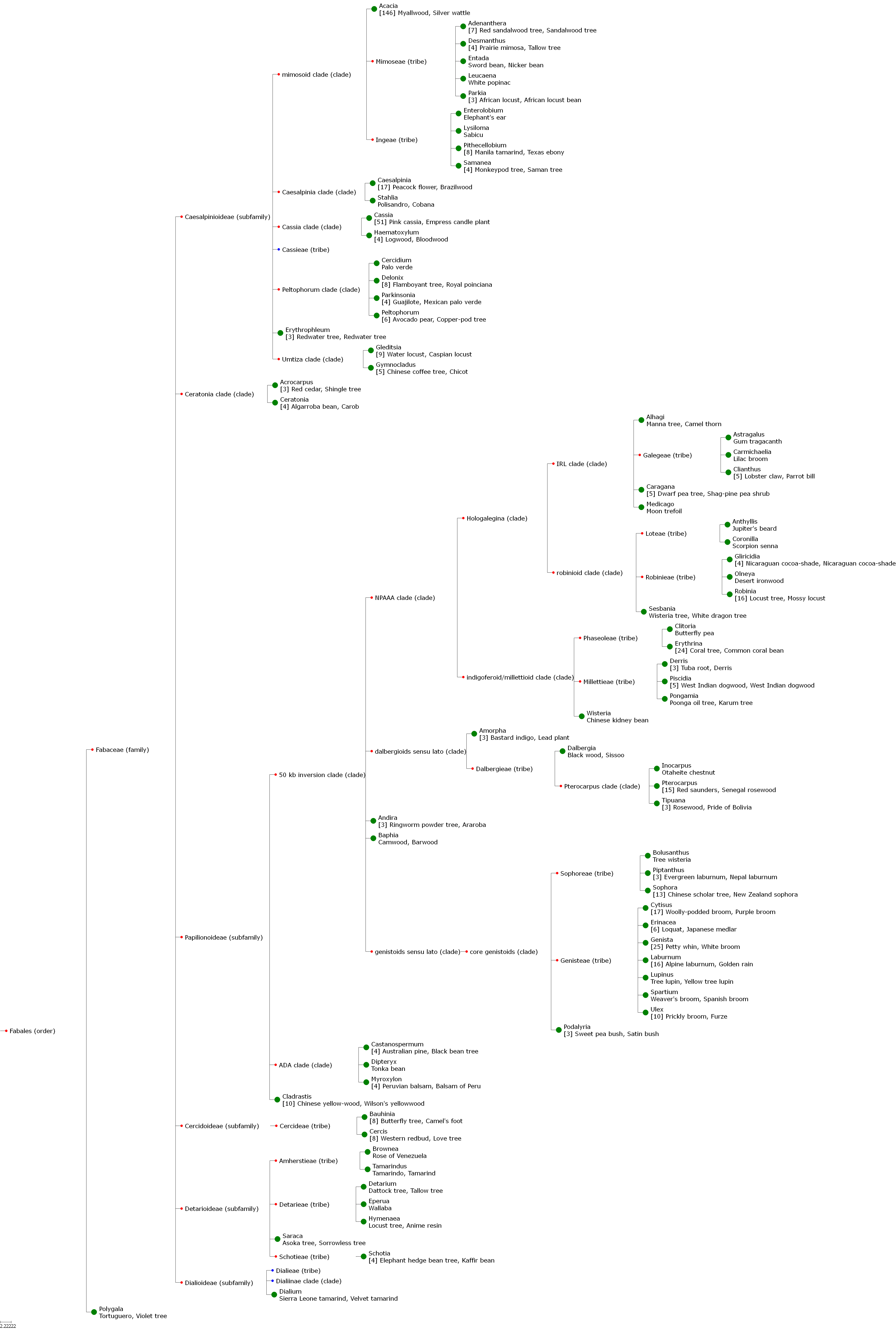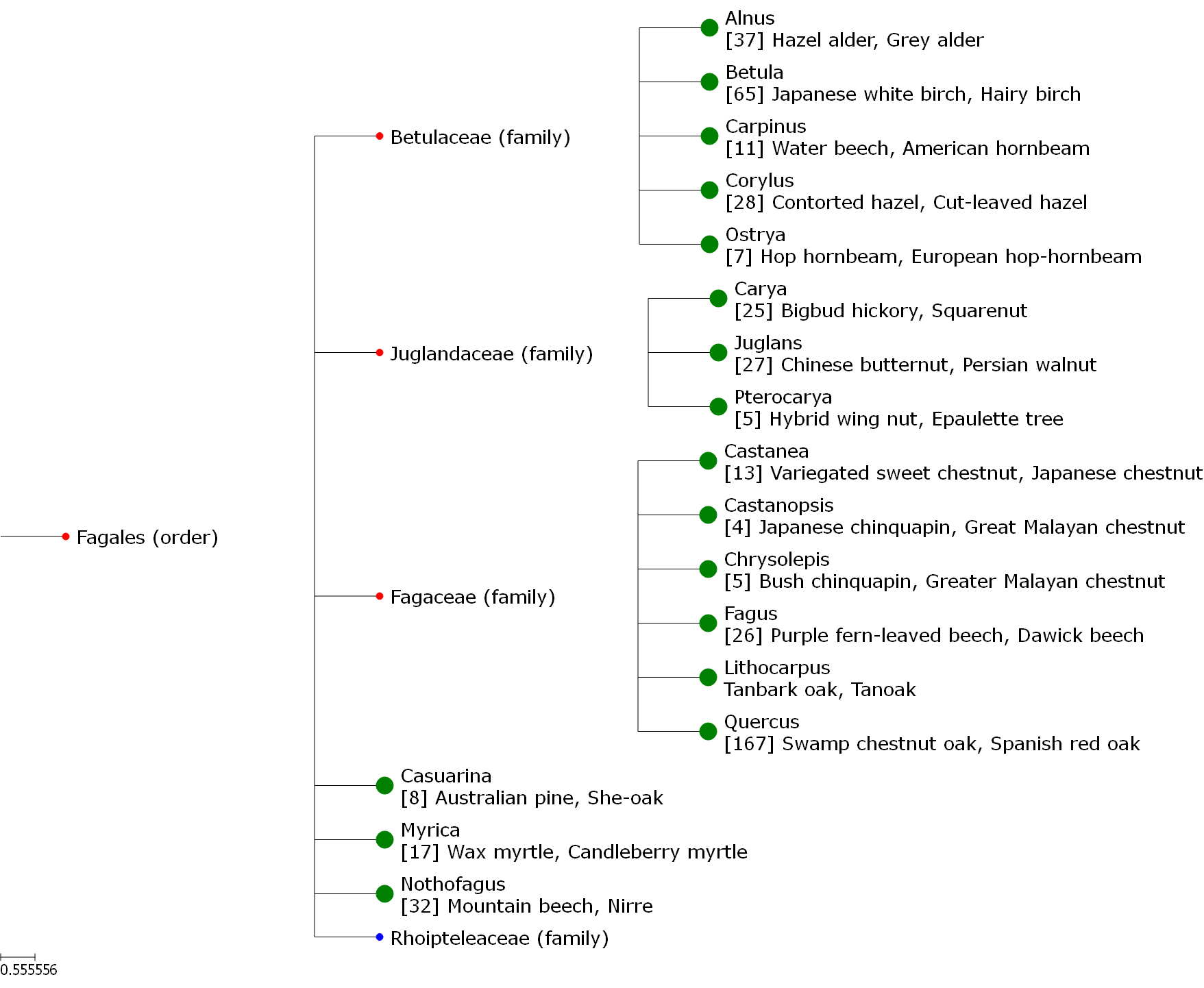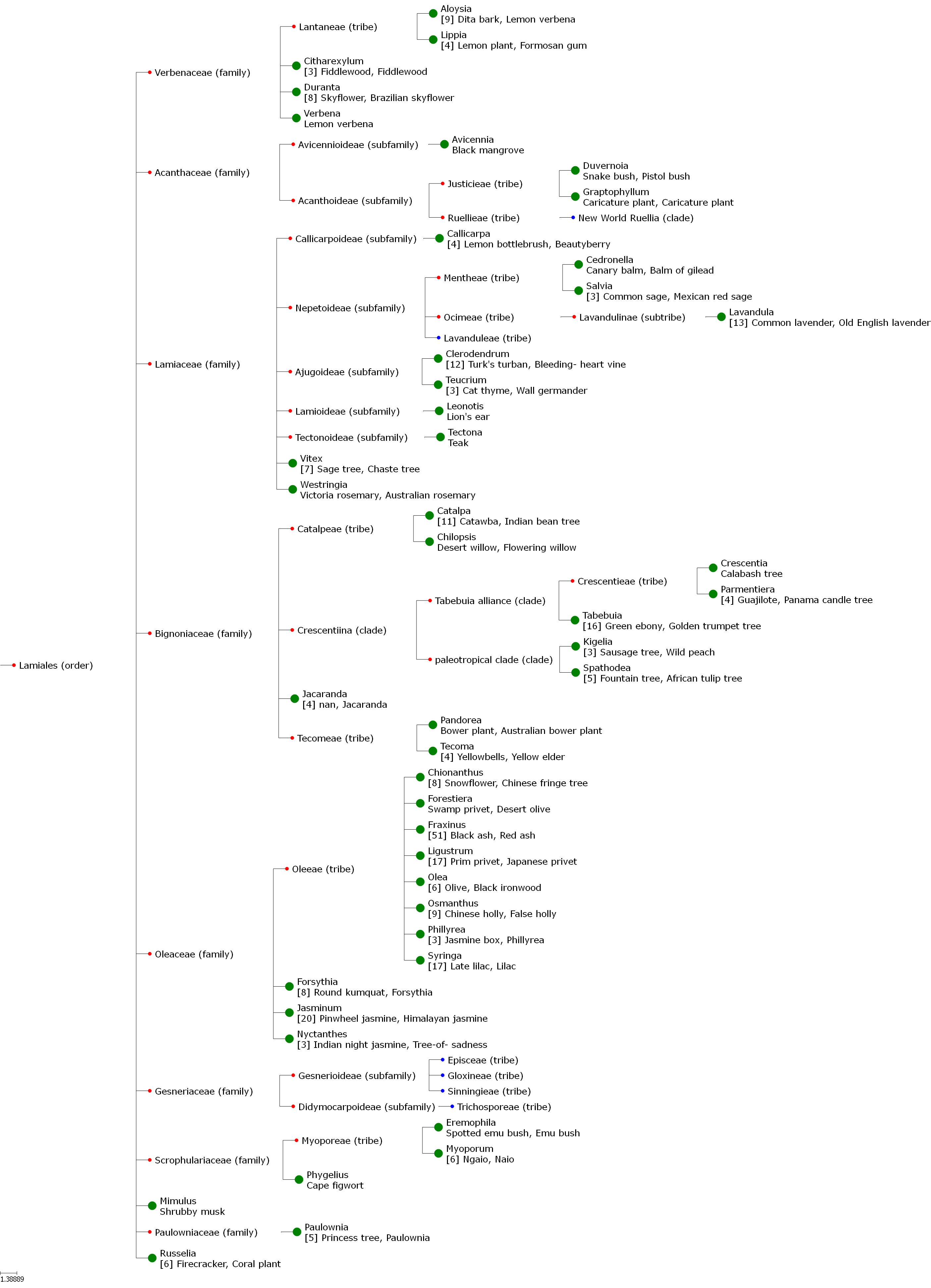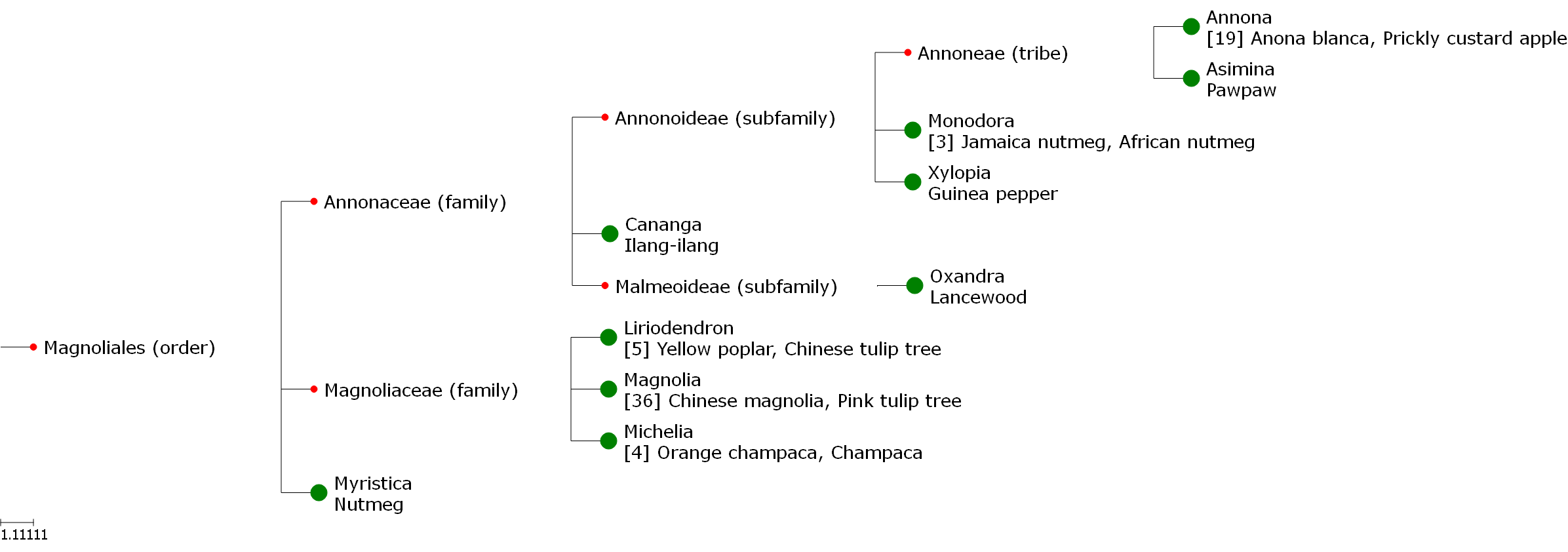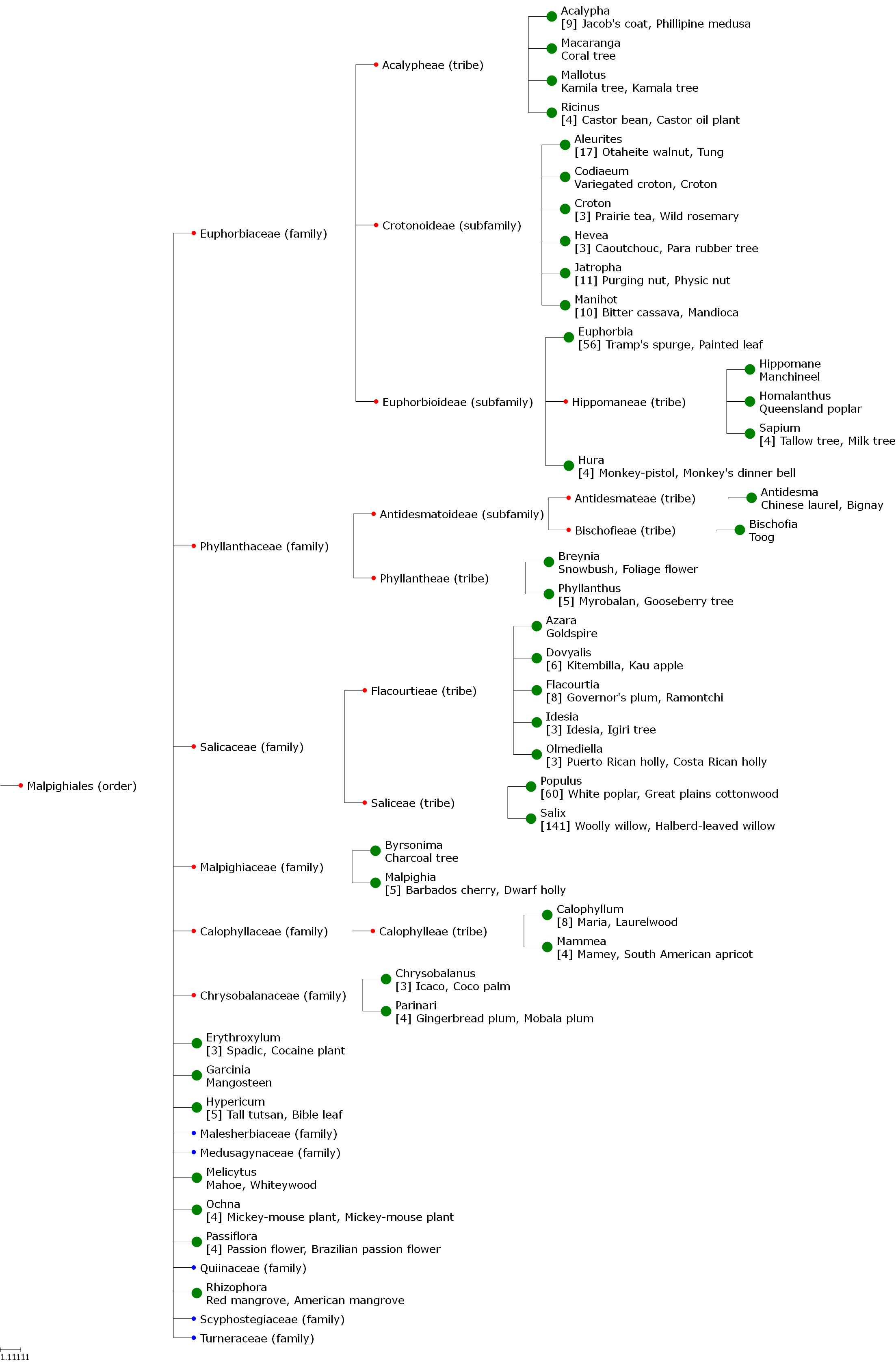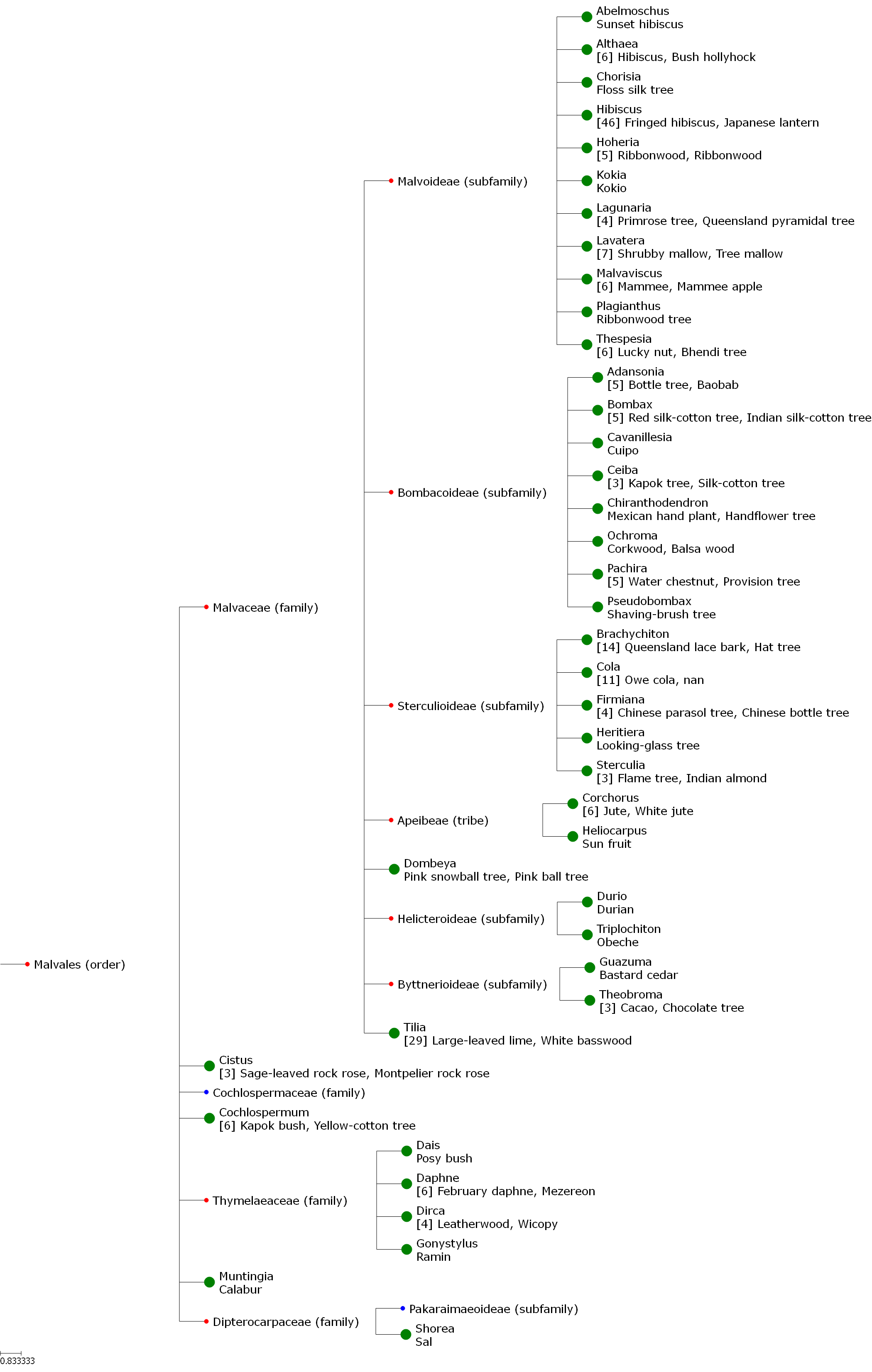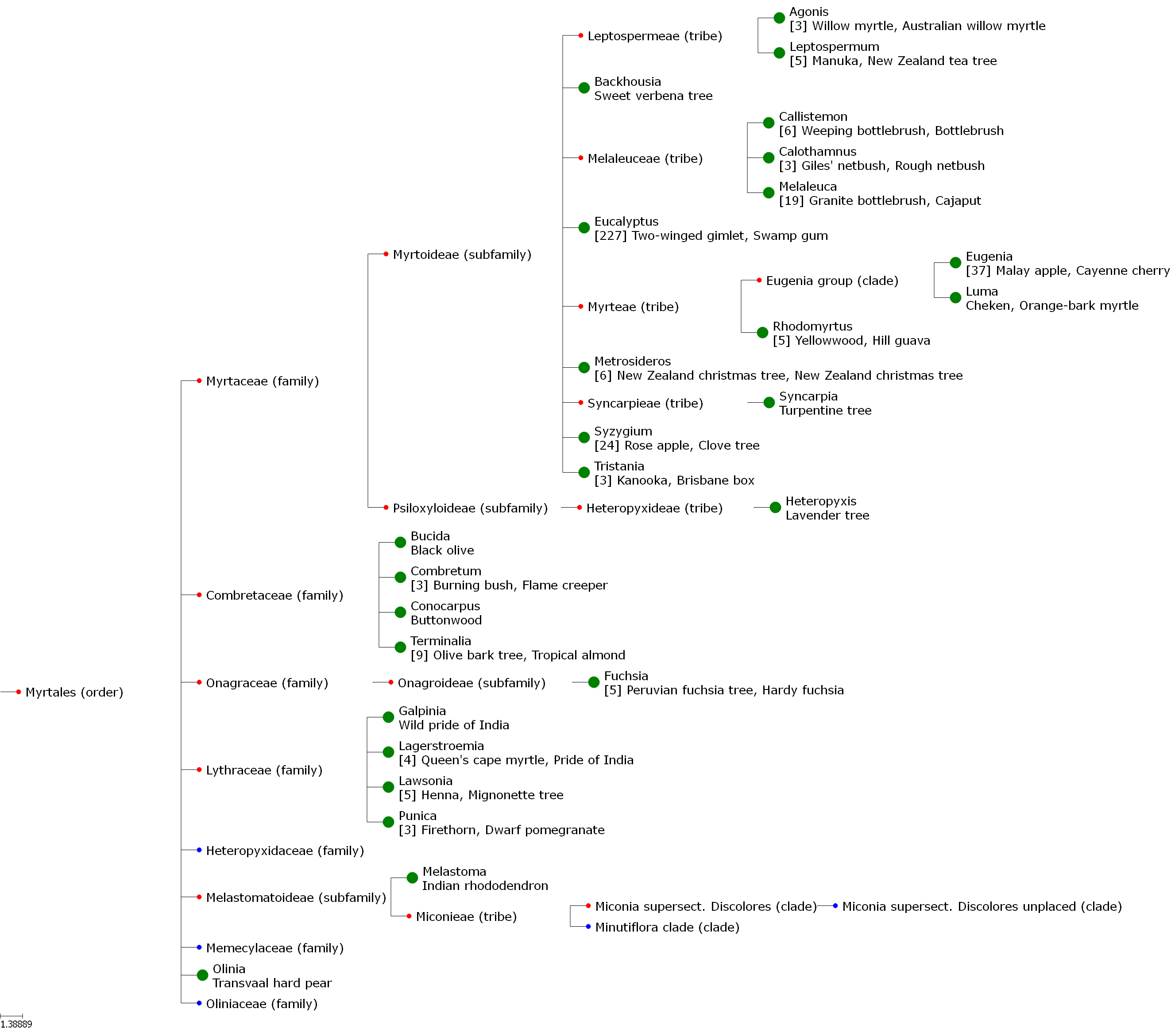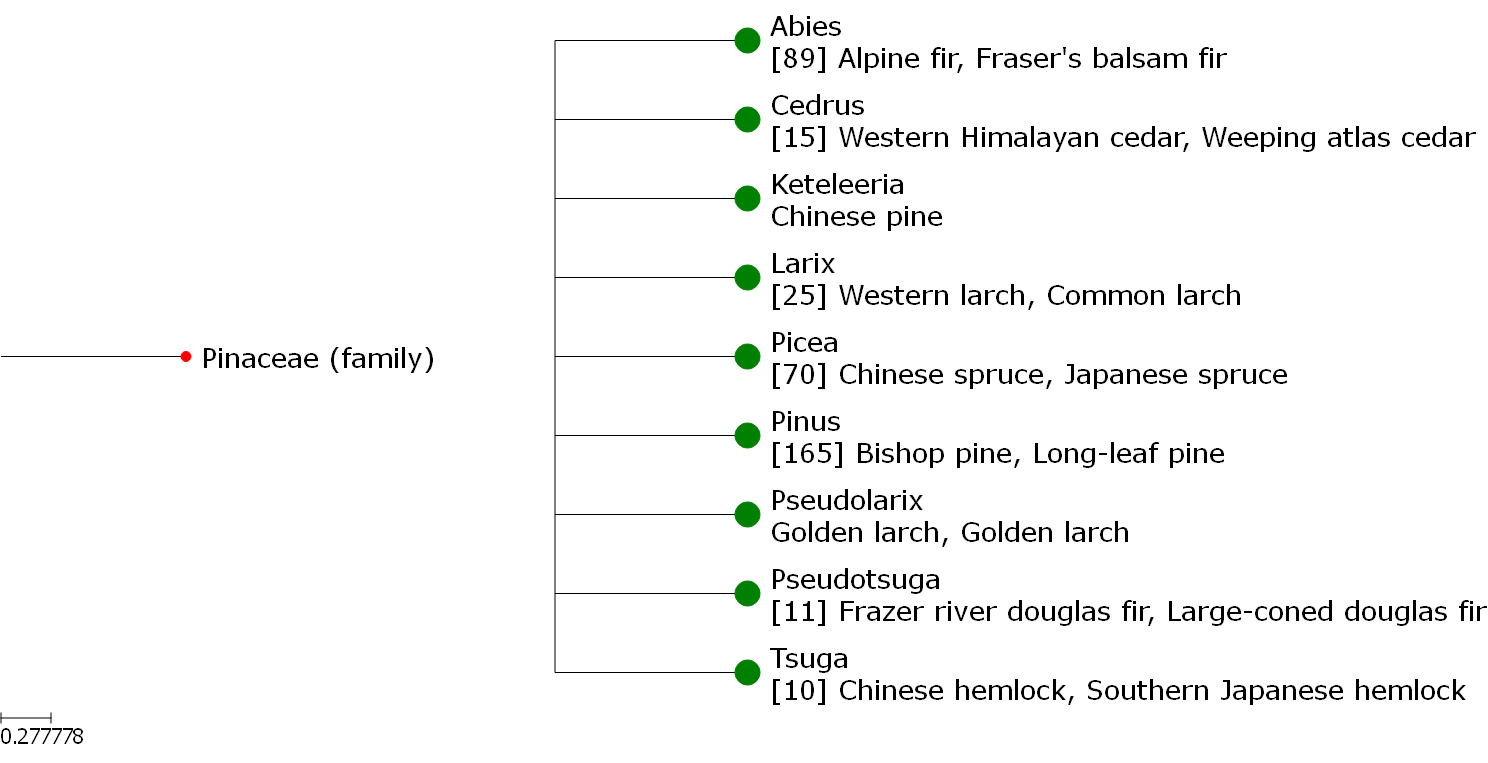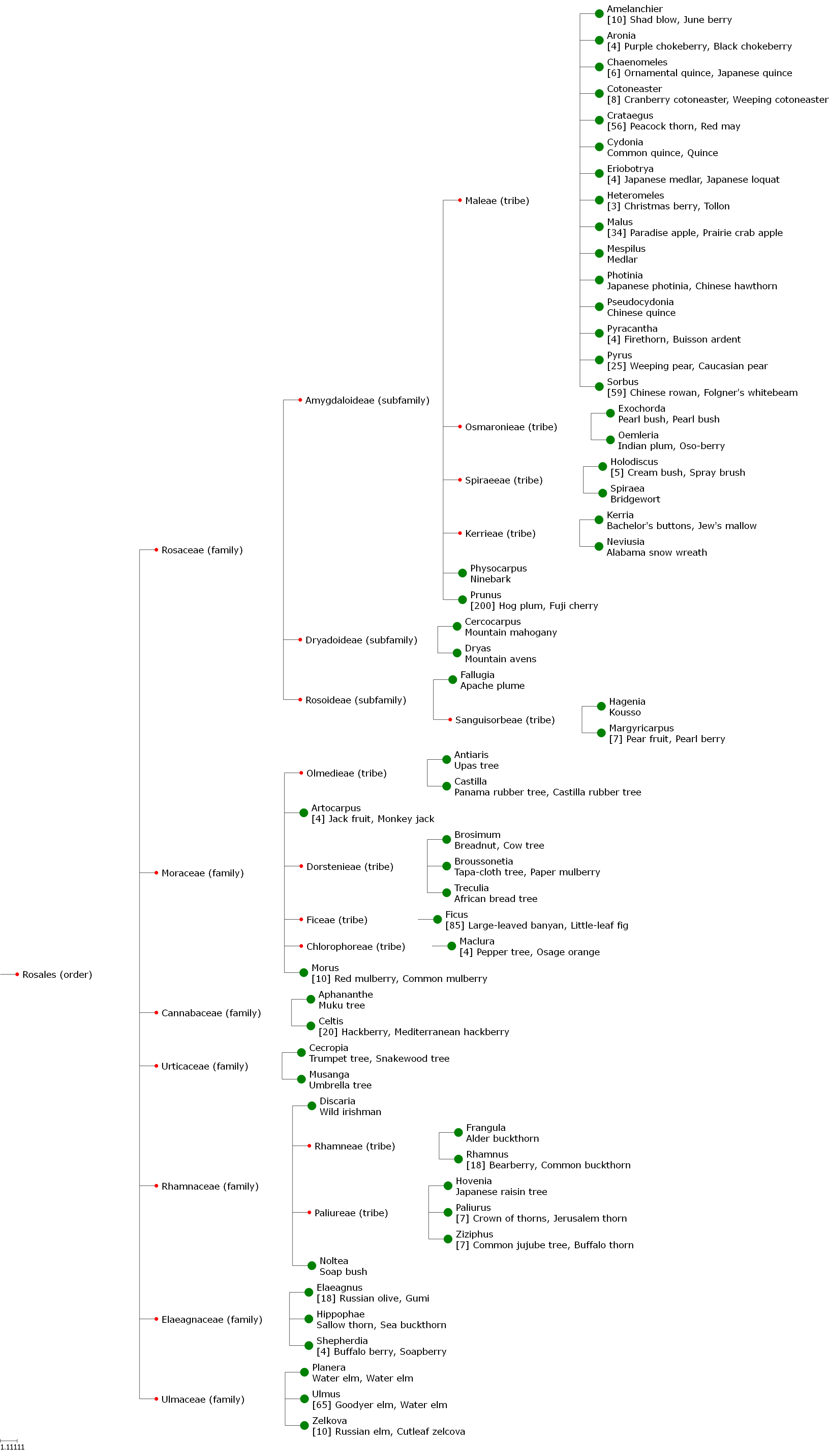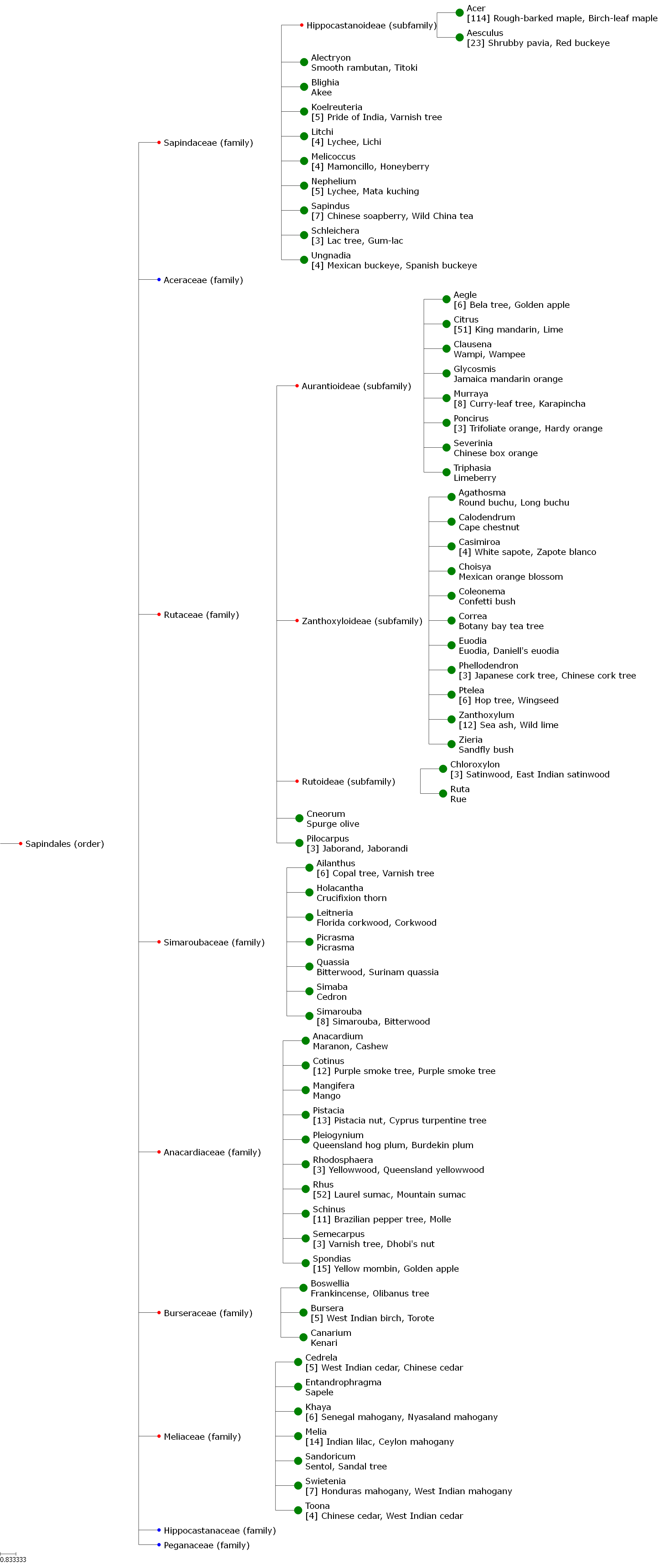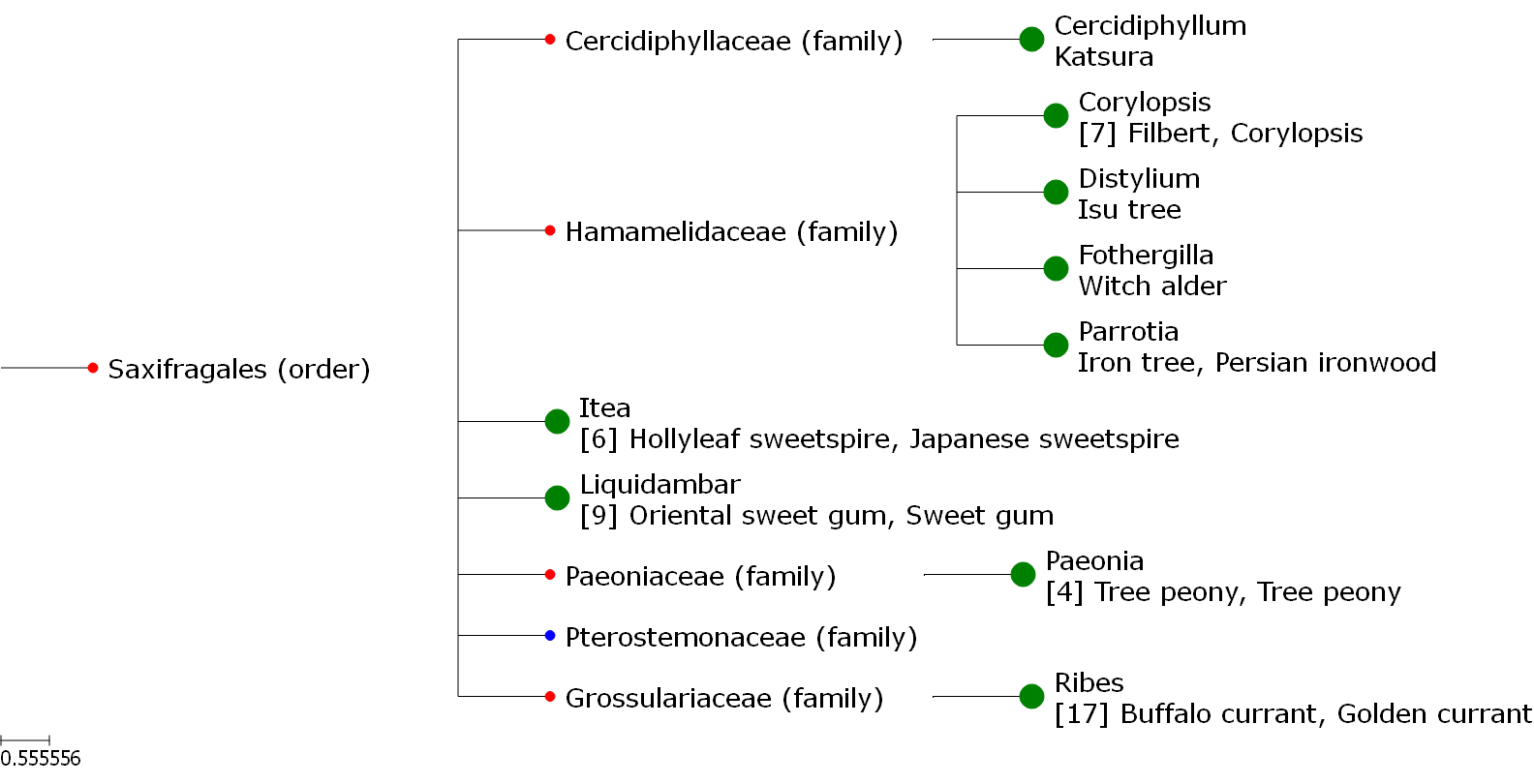11. Phylogenetic Trees for Common Tree Species
Common Tree Orders
This page focuses on orders containing trees common in the UK and US. It shows the same information as the Phylogenetic trees page. Commentary is GPT-generated, trees are generated using the ETE Toolkit based on the NCBI database.
Cupressales (1446379)
Cupressales derives from Cupressus, the Latin name for cypress trees. This order contains coniferous trees like cypress (Cupressus), redwoods (Sequoia), and junipers (Juniperus), all known for their longevity and resilience. The giant sequoias (Sequoiadendron giganteum) in this order are among the largest trees in the world, reaching over 80 meters tall.
Lineage: Tracheophyta -> Pinopsida -> Cupressales
Fabales (72025)
Fabales comes from Faba, meaning “bean” in Latin, highlighting the legumes’ signature bean-like seeds. This order includes trees like acacias (Acacia), black locusts (Robinia), and tamarind (Tamarindus). Plants in this order are often nitrogen-fixers, forming symbiotic relationships with soil bacteria that enrich the soil, making Fabales essential for agriculture and ecosystem health.
Lineage: Tracheophyta -> Magnoliopsida -> rosids -> fabids -> Fabales
Fagales (3502)
Fagales takes its name from Fagus (beech trees), and includes familiar genera like oaks (Quercus), beeches (Fagus), and birches (Betula). Trees in this order often produce nuts, such as acorns and beechnuts. Oaks, in particular, have been historically important for shipbuilding and are valued for their hard, durable wood.
Lineage: Tracheophyta -> Magnoliopsida -> rosids -> fabids -> Fagales
Ginkgoales (3308)
Ginkgoales is named for its sole surviving member, Ginkgo biloba, often called a living fossil. This order’s name reflects the ancient lineage of the ginkgo, which has survived largely unchanged for over 200 million years. Ginkgo trees are revered in East Asia for their medicinal properties and resilience in urban environments.
Lineage: Tracheophyta -> Ginkgoopsida -> Ginkgoales
Lamiales (4143)
Lamiales is derived from Lamium, the genus for deadnettles, and contains a wide range of flowering plants including olive trees (Olea), ashes (Fraxinus), and lavender (Lavandula). Many species in this order produce aromatic oils or are used in traditional medicine, making it ecologically and economically significant.
Lineage: Tracheophyta -> Magnoliopsida -> asterids -> lamiids -> Lamiales
Magnoliales (3400)
Magnoliales is named after the genus Magnolia, which includes some of the oldest flowering plants. The order includes magnolias (Magnolia) and nutmeg trees (Myristica). These trees are interesting for their ancient origins, dating back to the time of the dinosaurs, and for the large, showy flowers that many species in this order produce.
Lineage: Tracheophyta -> Magnoliopsida -> Magnoliales
Malpighiales (3646)
Malpighiales is a large and diverse order, named after the botanist Marcello Malpighi. It includes genera like willows (Salix), spurges (Euphorbia), and passionflowers (Passiflora). One of the more fascinating aspects of this order is its ecological diversity, with species ranging from herbs to towering trees, many of which have adapted to extreme environments.
Lineage: Tracheophyta -> Magnoliopsida -> rosids -> fabids -> Malpighiales
Malvales (41938)
Malvales is named after the genus Malva (mallow), and includes economically important trees like the baobabs (Adansonia) and kapok (Ceiba), as well as cotton (Gossypium). Baobabs are especially interesting for their unique appearance, with massive trunks that store water, allowing them to thrive in arid environments.
Lineage: Tracheophyta -> Magnoliopsida -> rosids -> malvids -> Malvales
Myrtales (41944)
Myrtales comes from Myrtus (myrtle) and includes genera like eucalyptus (Eucalyptus), myrtle (Myrtus), and guava (Psidium). Eucalyptus trees dominate Australian landscapes and are fascinating for their fast growth and essential oils, which are highly flammable, making wildfires a significant part of their ecological cycle.
Lineage: Tracheophyta -> Magnoliopsida -> rosids -> malvids -> Myrtales
Pinales (1446380)
Pinales is named for the genus Pinus (pines), and includes all conifers like pines (Pinus), spruces (Picea), and firs (Abies). These trees are vital for timber production and carbon sequestration. The needle-like leaves and cone-bearing reproductive structures are key adaptations that allow these trees to thrive in colder climates.
Lineage: Tracheophyta -> Pinopsida -> Pinales
Rosales (3744)
Rosales is derived from Rosa (rose) and includes a wide variety of trees and shrubs, including apples (Malus), pears (Pyrus), and elms (Ulmus). Many species in this order produce edible fruits, making it economically important. The presence of both fruit-bearing trees and ornamentals reflects the order’s wide ecological range.
Lineage: Tracheophyta -> Magnoliopsida -> rosids -> fabids -> Rosales
Sapindales (41937)
Sapindales is named after Sapindus, the soapberry tree, and contains well-known genera like maples (Acer), citrus (Citrus), and horse chestnuts (Aesculus). The order is notable for its diversity, including species that produce both soap-like saponins (in soapberries) and important fruit crops like oranges and lemons.
Lineage: Tracheophyta -> Magnoliopsida -> rosids -> malvids -> Sapindales
Saxifragales (41946)
Saxifragales comes from Saxifraga (stone-breaker), and includes genera like witch hazel (Hamamelis) and currants (Ribes). Many species in this order are adapted to harsh, rocky environments, with “stone-breaking” referring to the plants’ ability to grow in cracks and crevices, where they play an important role in preventing soil erosion.
Lineage: Tracheophyta -> Magnoliopsida -> Saxifragales
